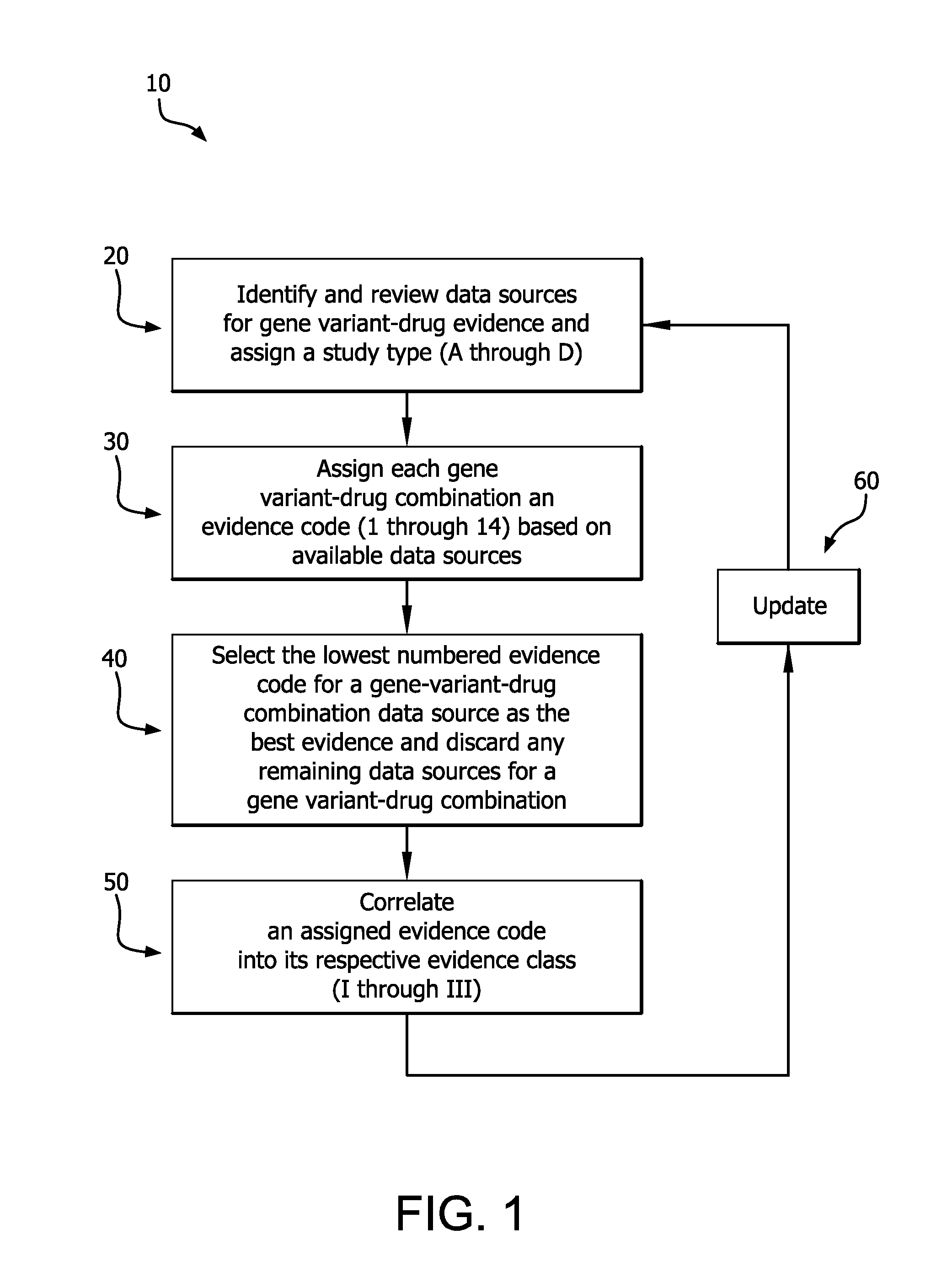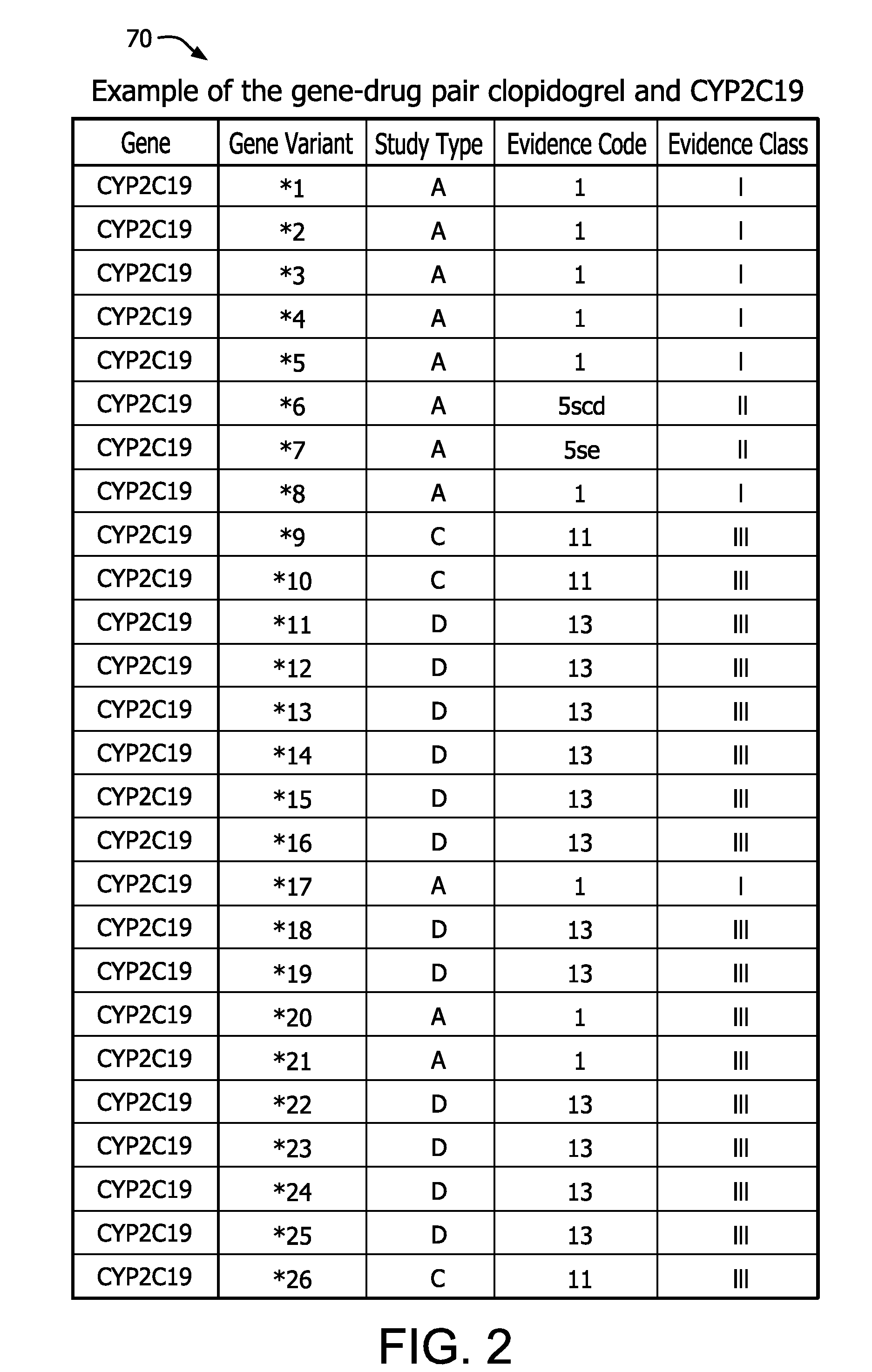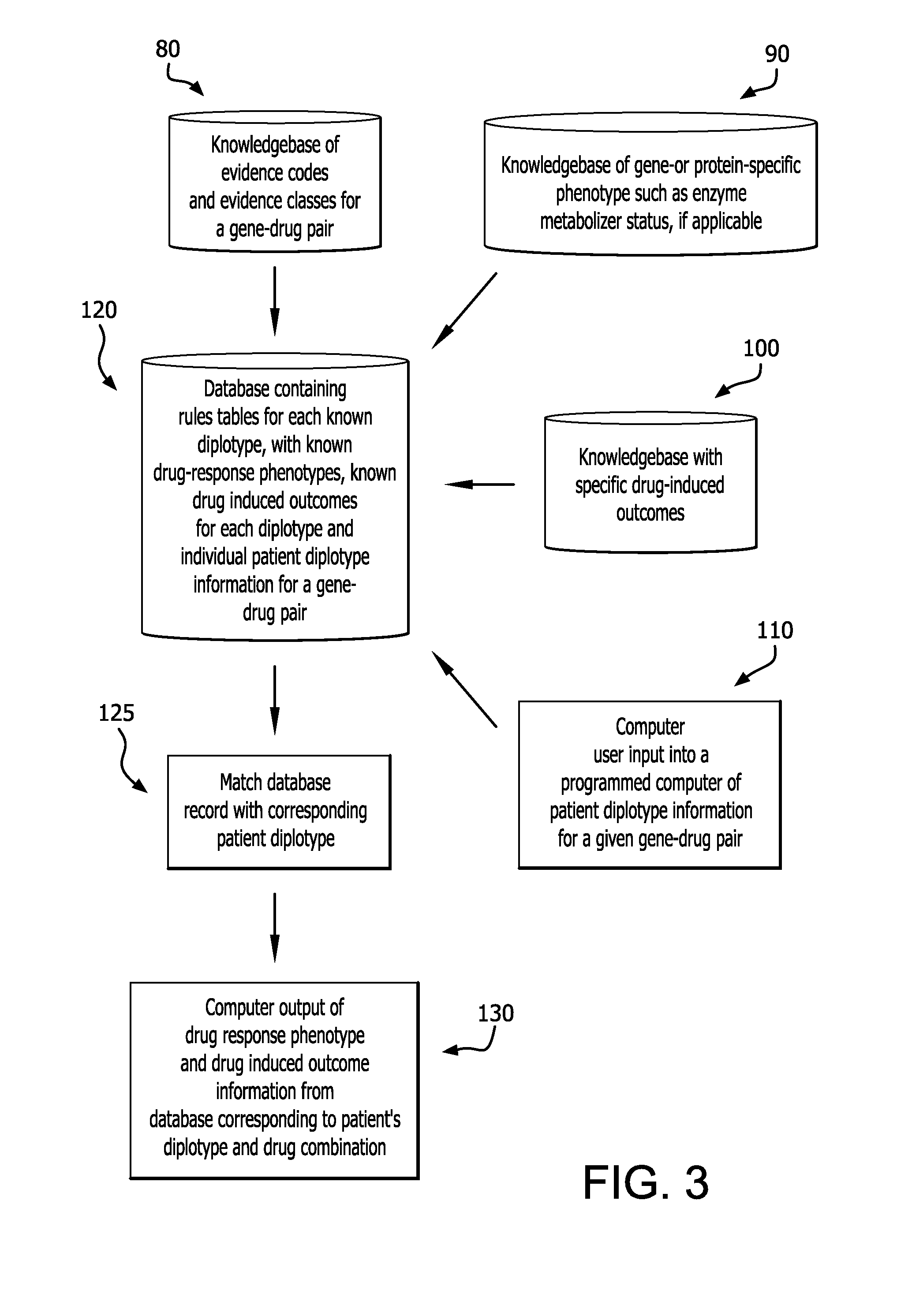Method for translating genetic information for use in pharmacogenomic molecular diagnostics and personalized medicine research
a genetic information and molecular diagnostic technology, applied in the field of personalized medical research, can solve problems such as lag in implementation, adverse drug reaction prevalence, and rigorous systems
- Summary
- Abstract
- Description
- Claims
- Application Information
AI Technical Summary
Benefits of technology
Problems solved by technology
Method used
Image
Examples
Embodiment Construction
[0031]Referring to the drawings wherein like or similar references indicate like or similar elements throughout the several views, there is shown in FIG. 1 a diagram describing the method for carrying out one embodiment of the invention, generally identified by reference numeral 10.
[0032]Step 20 initiates the process according to the invention for a given drug of interest by identifying the gene(s) known to affect drug response and behavior. On-going review of published literature and web-based databases will identify genes in which specific genetic variants are shown to affect response to the drug of interest.
[0033]For each drug-gene pair, peer-reviewed scientific and clinical literature and public web-based databases are searched for studies that report drug-related genotype-phenotype associations. Searches include but are not limited to: (a) the drug of interest and “genetics”, (b) the drug and the gene of interest; (c) individual genetic variants or haplotypes of the gene of int...
PUM
 Login to View More
Login to View More Abstract
Description
Claims
Application Information
 Login to View More
Login to View More - R&D
- Intellectual Property
- Life Sciences
- Materials
- Tech Scout
- Unparalleled Data Quality
- Higher Quality Content
- 60% Fewer Hallucinations
Browse by: Latest US Patents, China's latest patents, Technical Efficacy Thesaurus, Application Domain, Technology Topic, Popular Technical Reports.
© 2025 PatSnap. All rights reserved.Legal|Privacy policy|Modern Slavery Act Transparency Statement|Sitemap|About US| Contact US: help@patsnap.com



